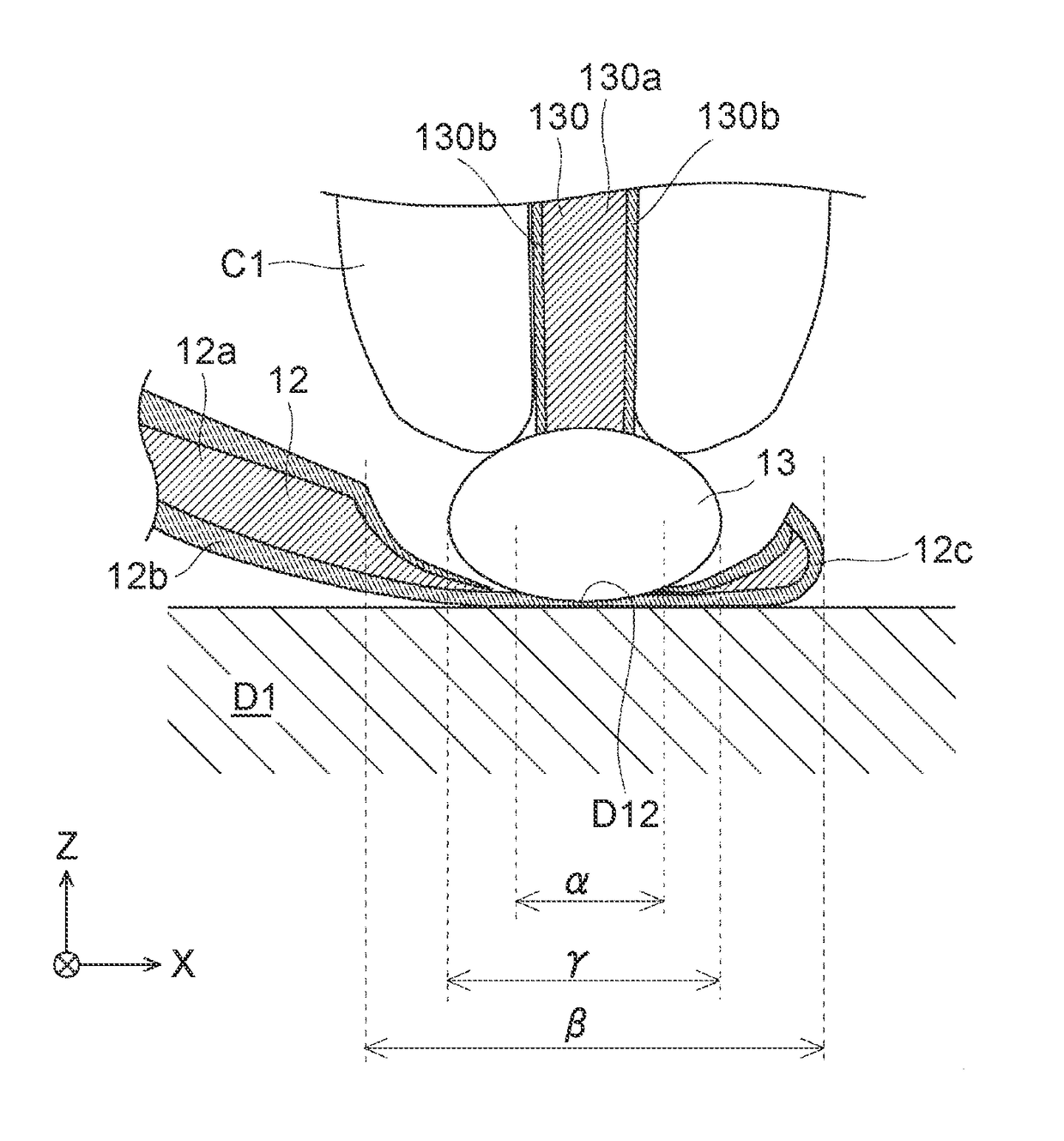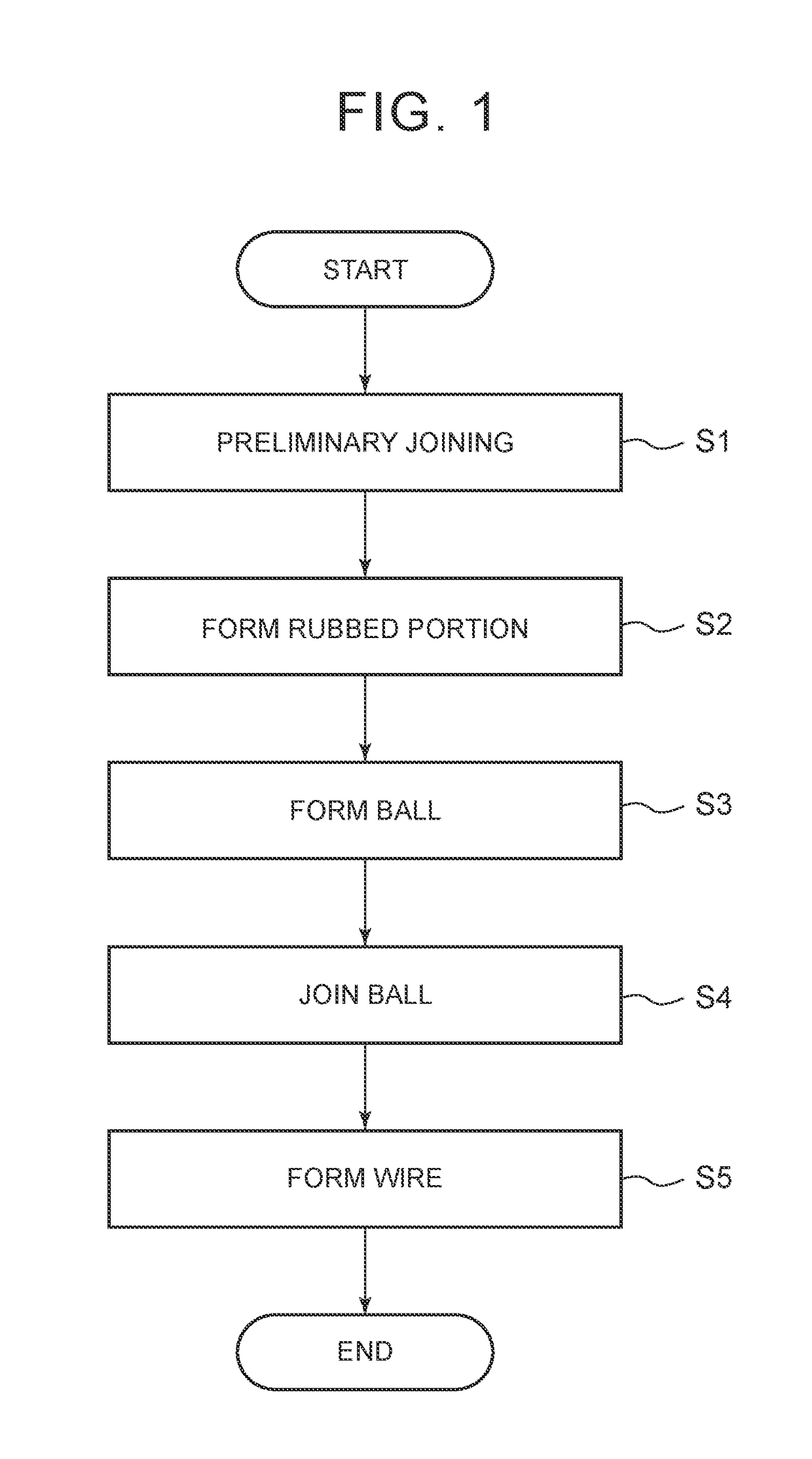Copper wire and electrode joining method and joint structure
a copper wire and electrode technology, applied in non-electric welding apparatuses, manufacturing tools, welding/soldering/cutting articles, etc., can solve the problems of capillary damage to the electrode, cracks tend to develop in the cu, etc., to reduce the like, and ensure the strength of the joint. , the effect of reducing the likelihood of electrode damag
- Summary
- Abstract
- Description
- Claims
- Application Information
AI Technical Summary
Benefits of technology
Problems solved by technology
Method used
Image
Examples
Embodiment Construction
[0036]A copper wire joining method according to a first example embodiment will now be described with reference to FIGS. 1 to 3D. FIG. 1 is a flowchart illustrating a copper wire joining method according to the first example embodiment. FIGS. 2A to 2L are views showing frame formats of steps in the copper wire joining method according to the first example embodiment. FIGS. 3A to 3D are views showing frame formats of the details of the steps in the copper wire joining method according to the first example embodiment. In the drawings (FIGS. 2 to 9), a right-handed xyz three-dimensional coordinate system is provided as appropriate. The joining method of the first example embodiment connects a device-side electrode D1 to a lead frame-side electrode L1 using a copper wire. The device-side electrode D1 includes aluminum (Al) as its main component.
[0037]As shown in FIGS. 2B and 2C, a preliminary bond 11 is formed at a preliminary joining region D11 (preliminary joining step S1).
[0038]More ...
PUM
| Property | Measurement | Unit |
|---|---|---|
| distance | aaaaa | aaaaa |
| joint structure | aaaaa | aaaaa |
| electrical resistance | aaaaa | aaaaa |
Abstract
Description
Claims
Application Information
 Login to View More
Login to View More - R&D
- Intellectual Property
- Life Sciences
- Materials
- Tech Scout
- Unparalleled Data Quality
- Higher Quality Content
- 60% Fewer Hallucinations
Browse by: Latest US Patents, China's latest patents, Technical Efficacy Thesaurus, Application Domain, Technology Topic, Popular Technical Reports.
© 2025 PatSnap. All rights reserved.Legal|Privacy policy|Modern Slavery Act Transparency Statement|Sitemap|About US| Contact US: help@patsnap.com



